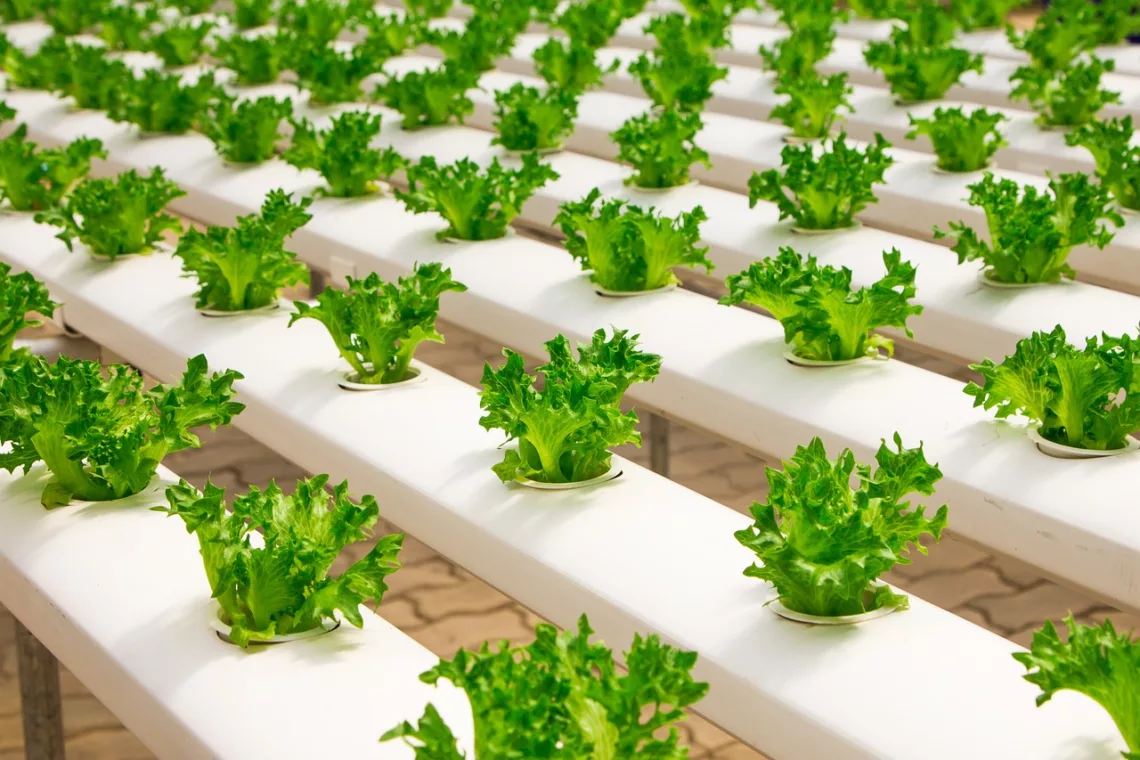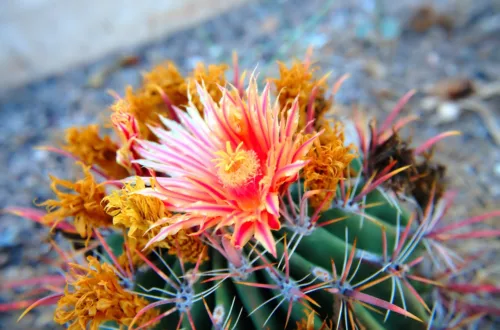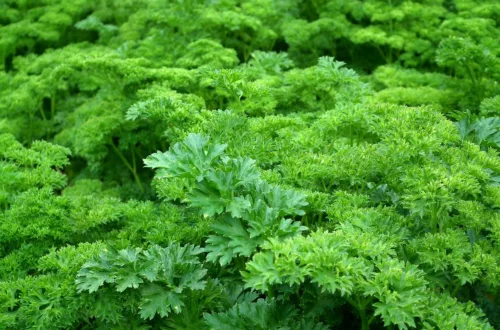Growing herbs hydroponically is a great way to enjoy fresh herbs year-round. Hydroponic systems allow for controlled growing conditions and eliminate the need for soil, making it a clean and efficient way to grow herbs. In this article, we will explore the benefits of growing herbs hydroponically and provide tips for setting up your own hydroponic herb garden.
Disclaimer: This article is provided for informational purposes only and should not replace professional medical advice. Please consult with a qualified healthcare practitioner or herbalist before using any herbal remedies.
One of the biggest advantages of growing herbs hydroponically is the ability to control the growing conditions. With hydroponics, you can adjust the nutrient levels, pH, and lighting to create the perfect environment for your herbs to thrive. This means that you can grow herbs year-round, regardless of the weather outside.
Another benefit of hydroponic herb gardening is that it eliminates the need for soil. This makes it a clean and efficient way to grow herbs, without the mess and hassle of traditional gardening. Plus, since there is no soil, there is less risk of pests and diseases, which means you can grow healthier and more flavorful herbs. In the next section, we will provide some tips for setting up your own hydroponic herb garden.
Benefits of Growing Herbs Hydroponically
If you’re interested in growing fresh herbs but don’t have a lot of space or time, hydroponic herb gardening may be the perfect solution for you. Here are some benefits of growing herbs hydroponically:
Higher Yields and Faster Growth~ Growing Herbs Hydroponically
One of the biggest advantages of hydroponic herb gardening is that it can produce higher yields and faster growth than traditional soil gardening. Since the plants are grown in a nutrient-rich water solution, they can absorb nutrients more efficiently, leading to faster growth and larger yields.
Less Water and Space Needed~ Growing Herbs Hydroponically
Hydroponic herb gardening also requires less water and space than traditional soil gardening. Since the plants are grown in a water solution, there is no need for soil, which can take up a lot of space and require more water. This makes hydroponic herb gardening a great option for those with limited growing space or who want to conserve water.
Controlled Environment for Plant Growth~ Growing Herbs Hydroponically
Another benefit of hydroponic herb gardening is that it allows for a controlled environment for plant growth. Since the plants are grown indoors, you can control the temperature, humidity, and lighting to optimize plant growth. This can lead to healthier plants and better yields.
In summary, hydroponic herb gardening offers many benefits, including higher yields, faster growth, less water and space needed, and a controlled environment for plant growth. If you’re interested in growing fresh herbs at home, hydroponic herb gardening may be a great option for you.
Getting Started with Hydroponics
If you’re interested in growing herbs hydroponically, it’s important to understand the basics of hydroponics. Hydroponic gardening is a method of growing plants without soil, using a nutrient-rich water solution instead. This allows for more controlled growing conditions, faster growth rates, and higher yields.
Understanding the Basics of Hydroponics
The basic principle of hydroponics is simple: plants are grown in a nutrient-rich water solution instead of soil. This allows for more precise control over the growing conditions, as well as faster growth rates and higher yields. There are several different types of hydroponic systems, each with its own advantages and disadvantages.
Choosing the Right Hydroponic System
When it comes to choosing the right hydroponic system for growing herbs, there are several factors to consider. Some of the most popular hydroponic systems include deep water culture, nutrient film technique, and ebb and flow systems. Each system has its own unique advantages and disadvantages, so it’s important to choose the one that best fits your needs.
Selecting the Best Herbs for Hydroponics
Not all herbs are well-suited for hydroponic growing. Some of the best herbs for hydroponics include basil, mint, parsley, and oregano. These herbs are easy to grow and thrive in a hydroponic environment. It’s important to choose high-quality seeds or seedlings to ensure the best possible results.
In conclusion, growing herbs hydroponically can be a fun and rewarding experience. By understanding the basics of hydroponics, choosing the right hydroponic system, and selecting the best herbs for hydroponics, you can enjoy fresh, flavorful herbs all year round.
Setting Up Your Hydroponic Herb Garden~ Growing Herbs Hydroponically
Growing herbs hydroponically can be a fun and rewarding experience. Whether you are an experienced gardener or a beginner, setting up your own hydroponic herb garden is easy and requires only a few essential components.
The Essentials of a Hydroponic Setup
The first thing you will need is a hydroponic setup. This includes a grow tray, a nutrient solution, and a grow light. The grow tray is where you will place your plants, and the nutrient solution will provide your plants with the necessary nutrients to grow. The grow light is essential for providing your plants with the right amount of light.
Creating the Ideal Environment
To create the ideal environment for your hydroponic herb garden, you will need to make sure that the temperature and humidity are just right. The ideal temperature for most herbs is between 65 and 75 degrees Fahrenheit, and the ideal humidity is between 40 and 60 percent. You can use a thermometer and a hygrometer to monitor the temperature and humidity levels.
Maintaining the Hydroponic System
Maintaining your hydroponic system is essential for the health and growth of your plants. You will need to check the pH level of the nutrient solution regularly and adjust it if necessary. You should also check the nutrient levels and add more nutrient solution as needed.
In addition, you will need to check the water level in the grow tray and add more water if necessary. It is also important to clean the grow tray and the nutrient solution reservoir regularly to prevent the growth of algae and other harmful bacteria.
By following these simple steps, you can set up your own hydroponic herb garden and enjoy fresh herbs all year round. With the right growing conditions and the right hydroponics system, you can grow a variety of herbs in your own home.
Nutrients and Water in Hydroponic Gardening
Hydroponic gardening is a soil-less method of growing plants that relies on nutrient-rich water to provide plants with the necessary nutrients for healthy growth. In hydroponic gardening, we need to manage the nutrients and water levels carefully to ensure optimal plant growth.
The Role of Nutrients for Healthy Herbs
Herbs require specific nutrients to grow and thrive. In hydroponic gardening, we use a nutrient solution that contains all the essential nutrients for the herbs to grow. The nutrient solution is a mixture of hydroponic nutrients and water, which is delivered to the plants through a system of tubes and pumps.
To ensure that our herbs receive enough nutrients, we need to monitor the nutrient solution’s pH levels and nutrient concentration regularly. We can use a pH meter to measure the pH levels and adjust the nutrient concentration accordingly.
Managing Water Quality and Levels
Water is a critical component of hydroponic gardening. We need to ensure that the water we use is free from contaminants and has the right pH levels. We can use tap water for hydroponic gardening, but it is essential to check the water quality regularly. If the tap water has high levels of contaminants, we can use distilled water instead.
In hydroponic gardening, we also need to manage the water levels carefully. The water level should be high enough to cover the roots but not too high to prevent oxygen from reaching the roots. We can use a water level indicator to ensure that the water level is at the right level.
In conclusion, managing the nutrient and water levels is critical to the success of hydroponic gardening. By providing our herbs with enough nutrients and water, we can ensure that they grow healthy and strong.
Lighting and Aeration for Hydroponic Herbs~ Growing Herbs Hydroponically
When it comes to growing herbs hydroponically, lighting and aeration are two crucial factors that must be taken into consideration. In this section, we will explore the importance of choosing the right grow light and ensuring proper aeration for plant roots.
Choosing the Right Grow Light~ Growing Herbs Hydroponically
One of the most important factors in hydroponic herb growing is providing enough light for the plants to thrive. While natural light is always a great option, it is not always possible to guarantee consistent levels of light throughout the day. This is where grow lights come in.
There are many different types of grow lights available on the market, including LED, fluorescent, and high-intensity discharge (HID) lights. Each type of light has its own advantages and disadvantages. For example, LED lights are energy-efficient and long-lasting, while HID lights are more powerful and can cover a larger area.
When choosing a grow light, it’s important to consider the specific needs of your herbs. Some herbs require more light than others, and some may have specific light spectrum requirements. Be sure to do your research and choose a grow light that will provide the right amount and type of light for your plants.
Ensuring Proper Aeration for Plant Roots~ Growing Herbs Hydroponically
In addition to light, proper aeration is also crucial for hydroponic herb growing. Without enough oxygen, the roots of the plants can become waterlogged and suffocate. This is where an air pump and oscillating fan come in.
An air pump can be used to provide oxygen to the nutrient solution, ensuring that the roots of the plants have access to enough oxygen. An oscillating fan can also help to improve aeration by creating air movement around the plants.
It’s important to regularly check the roots of the plants to ensure that they are healthy and not becoming waterlogged. If you notice any signs of root rot or other issues, it may be necessary to adjust the aeration system or nutrient solution.
By choosing the right grow light and ensuring proper aeration, you can help your hydroponic herbs thrive and produce a bountiful harvest.
Common Hydroponic Systems and Techniques~ Growing Herbs Hydroponically
When it comes to growing herbs hydroponically, there are several common hydroponic systems and techniques that we can use. Each of these systems has its own advantages and disadvantages, and it’s important to choose the one that will work best for the specific herbs you’re growing.
Deep Water Culture (DWC)
Deep Water Culture (DWC) is a popular hydroponic system for growing herbs. In this system, plants are suspended in a nutrient-rich solution that is aerated with an air pump. The roots of the plants are submerged in the solution, allowing them to absorb the nutrients they need to grow.
Nutrient Film Technique (NFT)
Nutrient Film Technique (NFT) is another popular hydroponic system for growing herbs. In this system, a thin film of nutrient-rich water is continuously circulated over the roots of the plants. The roots absorb the nutrients they need from the film, and the excess water drains back into the reservoir.
Ebb and Flow Systems
Ebb and Flow systems are also known as Flood and Drain systems. In this system, plants are grown in pots or containers that are periodically flooded with nutrient-rich water. The water is then drained back into the reservoir, allowing the plants to absorb the nutrients they need.
Wick and Drip Systems
Wick and Drip systems are simple hydroponic systems that are easy to set up and maintain. In a wick system, a wick is used to draw nutrient-rich water from a reservoir to the roots of the plants. In a drip system, a drip line is used to deliver nutrient-rich water directly to the roots of the plants.
Aeroponic Systems
Aeroponic systems are advanced hydroponic systems that use misters or sprayers to deliver nutrient-rich water directly to the roots of the plants. In this system, the plants are suspended in the air, allowing the roots to absorb the nutrients they need without being submerged in water.
Each of these hydroponic systems and techniques has its own unique advantages and disadvantages. By choosing the right system for your herbs, you can ensure that they grow healthy and strong.
Advanced Tips for Growing Hydroponic Herbs~ Growing Herbs Hydroponically
Growing herbs hydroponically is a great way to ensure that you always have fresh herbs on hand. However, to get the best results, proper care and attention are required. In this section, we will discuss some advanced tips for growing hydroponic herbs to help you optimize your herb-growing process.
Monitoring pH and Electrical Conductivity
One of the most important factors in growing hydroponic herbs is maintaining the correct pH and electrical conductivity levels. We recommend using a pH meter and an electrical conductivity meter to monitor these levels regularly.
The ideal pH level for most herbs is between 5.5 and 6.5. If the pH level is too high or too low, it can affect the plant’s ability to absorb nutrients, leading to stunted growth or even death. On the other hand, the electrical conductivity level should be between 1.5 and 2.5 mS/cm for most herbs.
Optimizing the Harvesting Process
Harvesting herbs at the right time is crucial to ensure that you get the best flavor and aroma from your herbs. We recommend harvesting the herbs when they are at their peak flavor and aroma, which is usually just before the flowers bloom.
To optimize the harvesting process, we recommend using a sharp pair of scissors or pruning shears to cut the herbs. Be sure to cut the stems at a 45-degree angle to promote new growth. After harvesting, rinse the herbs with cool water and pat them dry with a clean towel.
By following these advanced tips for growing hydroponic herbs, you can ensure that you get the best results and enjoy fresh, flavorful herbs all year round. With your own herbs, you can add fresh flavors to your favorite dishes and save money on store-bought herbs.
Common Challenges and Solutions
Growing herbs hydroponically has its own set of challenges. However, with proper planning and care, these challenges can be overcome. In this section, we will discuss some common challenges faced by hydroponic herb growers and their solutions.
Dealing with Pests and Diseases
Pests and diseases are a common problem faced by hydroponic herb growers. Since hydroponic systems are a closed environment, pests and diseases can quickly spread and cause damage to your plants. The best way to deal with pests and diseases is to prevent them from occurring in the first place. Here are some tips to prevent pests and diseases:
- Use a good quality plant food that contains all the essential nutrients that your plants need to grow healthy.
- Keep your hydroponic system clean and well-maintained. Regularly check the pH level, temperature, and nutrient levels of your system.
- Monitor your plants regularly for signs of pests and diseases. Early detection is key to preventing the spread of pests and diseases.
- Use natural pest control methods like neem oil, insecticidal soap, and predatory insects to control pests.
If you do find pests or diseases in your hydroponic system, take immediate action to prevent them from spreading. Remove infected plants and treat the remaining plants with appropriate pesticides or fungicides.
Troubleshooting Hydroponic Herb Problems
Sometimes, despite your best efforts, problems can arise in your hydroponic herb garden. Here are some common problems that you may face and their solutions:
- Slow plant growth: If your plants are growing slowly, check the pH level and nutrient levels of your system. Adjust the pH level and nutrient levels as necessary to optimize plant growth.
- Wilting plants: Wilting plants can be a sign of over or under watering. Check the water level in your system and adjust as necessary. Also, check the nutrient levels and pH level of your system.
- Yellowing leaves: Yellowing leaves can be a sign of nutrient deficiency. Check the nutrient levels of your system and adjust as necessary. Also, check the pH level of your system.
By following these tips, you can troubleshoot common hydroponic herb problems and ensure that your plants grow healthy and strong with less maintenance.
Conclusion
Growing herbs hydroponically is a great way for home gardeners to have their own indoor herb garden. Hydroponics allows us to grow organic herbs without the use of pesticides or herbicides. This means we can have fresh, healthy herbs right at our fingertips that we can use for culinary purposes or for medicinal purposes.
One of the benefits of growing herbs hydroponically is that we can control the environment in which they grow. We can adjust the temperature, humidity, and nutrient levels to ensure that our herbs are growing in the best possible conditions. This means that we can have a consistent supply of high-quality herbs throughout the year.
Another benefit of growing herbs hydroponically is that we can save space. Hydroponic systems can be set up vertically, which means that we can grow more herbs in a smaller area. This is especially useful for those of us who live in apartments or have limited outdoor space.
In conclusion, growing herbs hydroponically is a great way for us to have our own indoor herb garden. We can grow organic herbs for culinary or medicinal purposes, control the environment in which they grow, and save space. With a little bit of effort, we can have a consistent supply of fresh, healthy herbs right at our fingertips.






